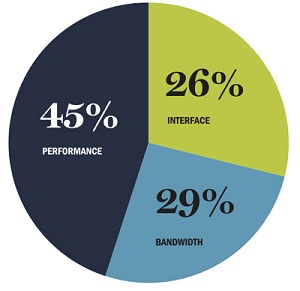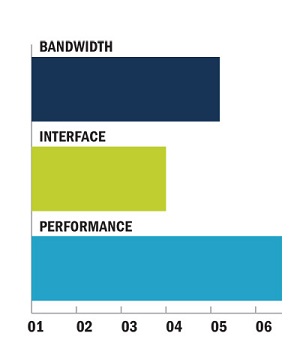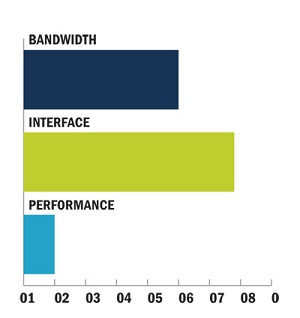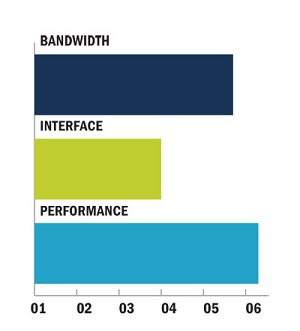Gerry Holmes knows exactly why his employees would be interested in having videoconferencing available to employees.
The IT director at Cancer Care Ontario is responsible for the communications technology strategy affecting 35 offices across the country. After consolidating much of its data centre infrastructure in part through effective optimization of the organization’s WAN and centralizing voice mail, he says he is now considering videoconferencing as a new killer app.
“People like to see faces,” he says, summing up the promise and the appeal of videoconferencing technology. That doesn’t mean it’s as simple as purchasing and deploying, however. “We’re trying to understand the requirements, in terms of who uses it and making sure we’re controlling it a little bit. You could bring parts of the network two its knees if they’re carrying on concurrent vidoeconferences in some of our smaller offices.”
Perhaps there’s no better way to sum up the attitude of Canadian IT professionals based on an online study conducted by Network World Canada earlier this year on behalf of Cisco Systems of Canada. Recognizing that several barriers are commonly cited by our audience, we asked them to rank which ones took priority, and in what order. The results could not only help vendors better address their customers’ questions before they ask them. The poll’s results could also help IT departments figure out how to get the green light for videoconferencing projects by figuring out which potential lightning rod worries to tackle first before they present anything to senior management.
Videoconferencing has been available in the marketplace for more than a dozen years, with at least two major opportunities for widespread use. The first was shortly following the aftermath of Sept. 11, 2001, when travel by air became much more difficult and many organizations shied away from putting their staff on planes. The second came just a few years ago during the most recent global recession, when many experts again predicted that videoconferencing would largely replace corporate travel. It has become clear this won’t happen, but as it becomes more affordable, reliable and easier to use, videoconferencing remains a technology with high potential to facilitate collaboration and improved communication in an increasingly globalized business environment. In fact, a recent study from Infonetics Research projects that enterprises will spend $5 billion on videoconferencing and telepresence by 2015.


The Barrier: Procuring and managing bandwidth
The Stats: If you break this down, approximately 57 per cent ranked it as their first or second choice, even though 42 per cent rated it third.
2. How do you turn this thing on?

The barrier: Simplifying user interfaces
The stats: More than 47 per cent of respondents said this was the least important issue they see, while the rest were more evenly split.
The analysis: It’s easy to dismiss the barrier that comes in third, but not when it represents more than a quarter of your total respondents. Videoconferencing is a highly personal technology, closely associated with productivity between teams of very different people. The results clearly indicate a need for further refinement of the way features and functions are presented to users so that they can be universally understood, with training so limited as to be eventually unnecessary, the same way that no one gets trained on how to make a phone call today.
3. Performance as a barrier

The Barrier: Assuring reliable performance
The Stats: This was the first or second choice for most of our respondents, with only about 10 per cent putting it last.
The analysis: If anyone has ever attended a videoconferencing demonstration and saw something go wrong, they clearly never forgot it. Or, worse, their primary exposure to the technology has not been enterprise-grade products but more consumer-oriented offerings from Skype and Google. Either way, IT professionals are concerned that videoconferencing will not meet the demands of corporate users on a consistent basis, and unless they can be persuaded otherwise, adoption may be limited to only those users and situations where traditional telephone or e-mail communications is not sufficient.
Conclusion
Perception is reality, and Canadian IT professionals still see a big gap between the on-screen conversations of characters in science fiction and what is actually possible in enterprise environments today.
IT departments are notorious punching bags for frustrated employees. If e-mail goes down or Internet access runs slow for any reason, there are grumbles followed by, in some cases, outright hostility. If there is even the slightest chance that videoconferencing implementations have ongoing glitches – distorted audio, perhaps, flickering screens or intermittent jitter – they know they will be putting themselves in a vulnerable position. Unless videoconferencing results in a significant reduction in travel expenditures, it may not seem worth it.
Similarly, bandwidth management remains a challenge for many network professionals, and adding videoconferencing to the mix may seem to complicate that. In some cases a deployment may make sense following a significant network overhaul, but growth of this product segment can’t be limited to large-scale transformations. Customers need to be convinced that videoconferencing is a worthwhile investment in its own right, not just an add-on as part of a bigger project.
Videoconferencing may be a more psychologically satisfying purchase in some organizations, and this should be explored in more detail by both IT professionals and vendor partners alike. Face-to-face conversations offer greater focus and attention than conference calls where employees may be typing or doing other things in the background. Facial expressions and body language can offer a more nuanced conversation than is otherwise possible through e-mail or chat. Business users became addicted to e-mail and the Internet not because they have always performed well but because their advantages outweighed the barriers. This is the balance the videoconferencing market is still trying to strike.